RealClassic reader Kevin Lemire is a fan of Kawasaki’s 650 twins, built back in the 1970s. He’s so enthusiastic about them that he owns half a dozen different types of W2…
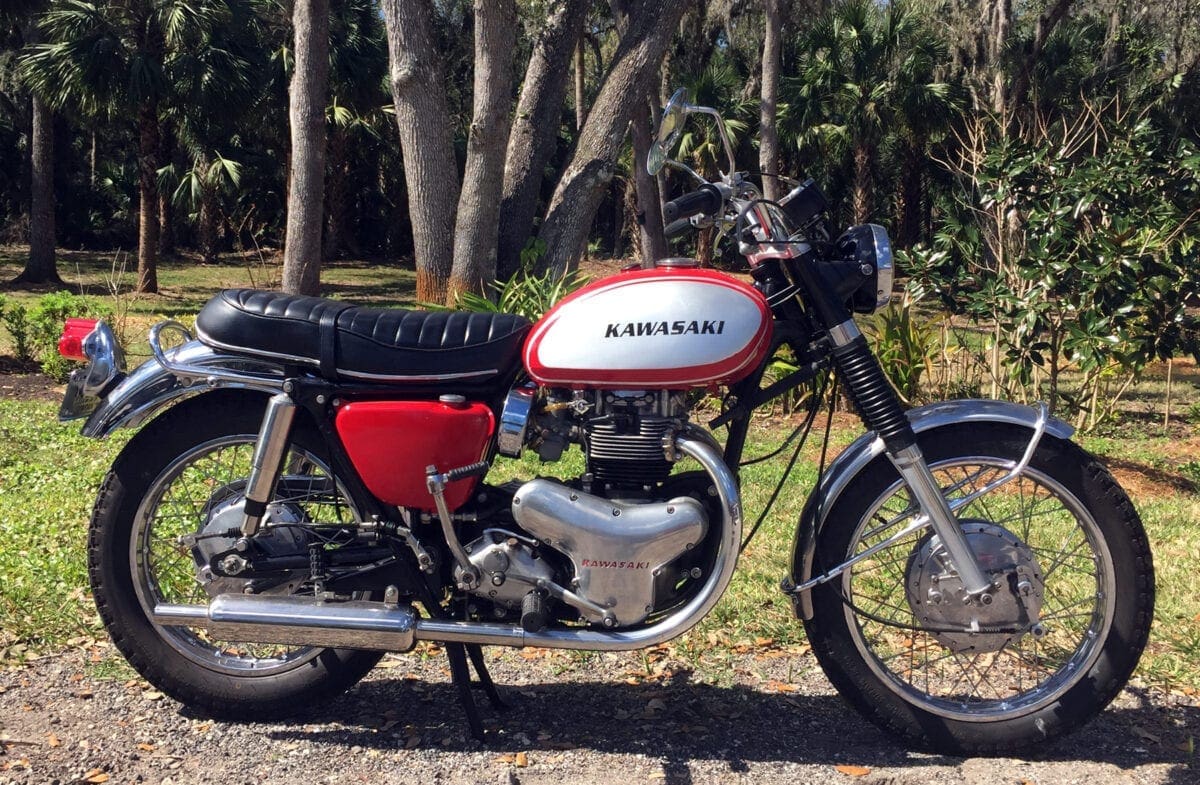
Kawasaki had every right to expect success in 1966 when they took the plunge with Japan’s first large capacity twin, the 624cc W1. After all, the entire postwar British industry was based around the parallel twin design they ‘borrowed.’ The W1 was unashamedly inspired by BSA’s A7 500 twin, although the Kawasaki first saw the light of day as the Meguro K1, a pushrod 500. When Kawasaki and Meguro merged, the K2 was launched, soon followed by the W1 650.
The W1 used a single 31mm Mikuni carb, a four-speed gearbox and, like the British twins it emulated, the W1 located its gearchange pedal on the right. But it was more like a BSA A7 than the later A50, with a separate gearbox – quite quaint, for the late 1960s. And neutral isn’t located between first and second gears but followed Kawasaki’s established style at the ‘top’ of the box.
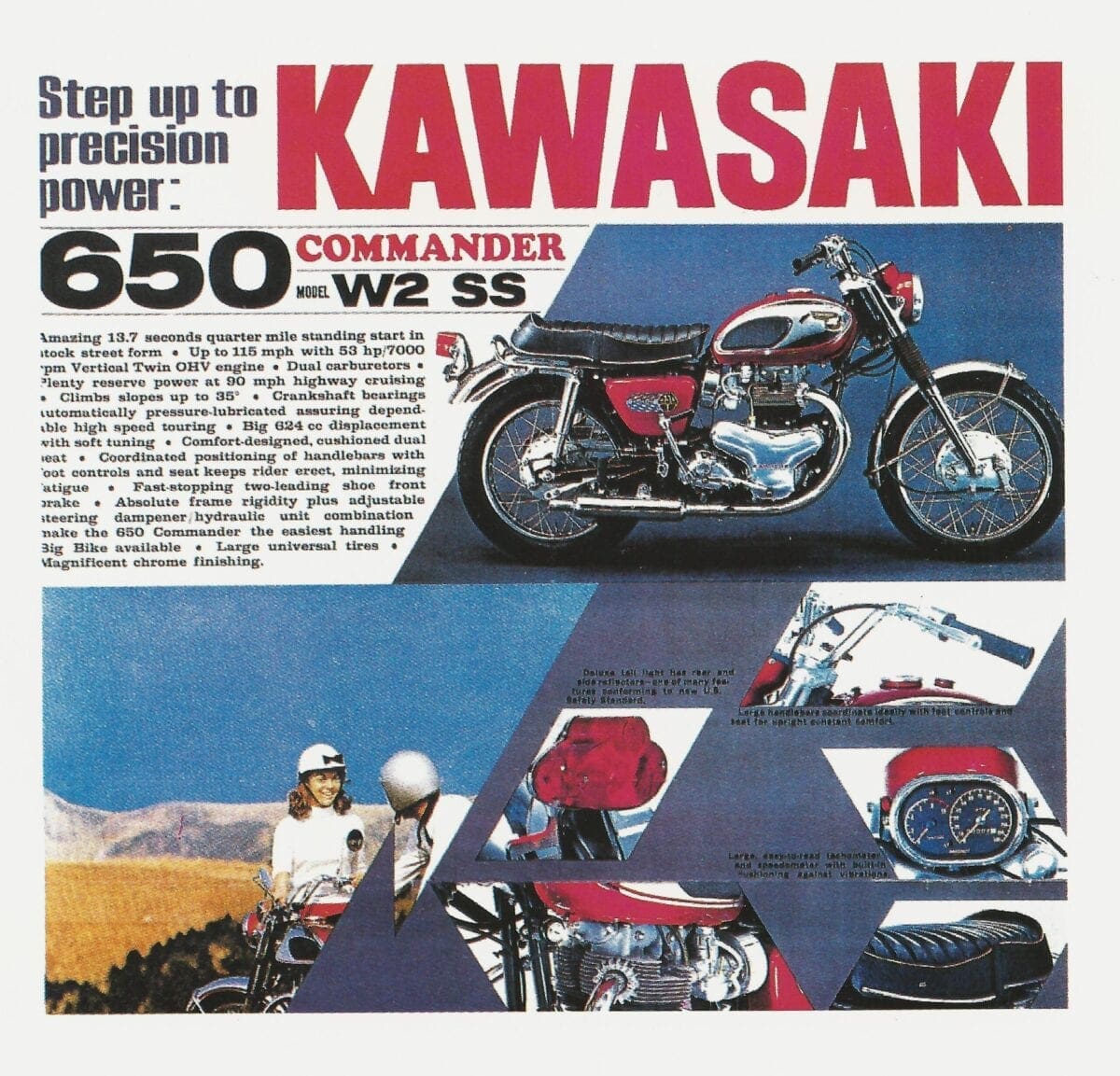
A tuned streetbike, the W2SS, arrived in 1967 with twin 28mm carbs, bigger inlet valves, 9:1 compressions and peashooter exhaust pipes. It boasted 53bhp at 7000rpm – uncannily similar to BSA’s A65L. The following year, a high-level exhaust system was attached to create the W2TT.
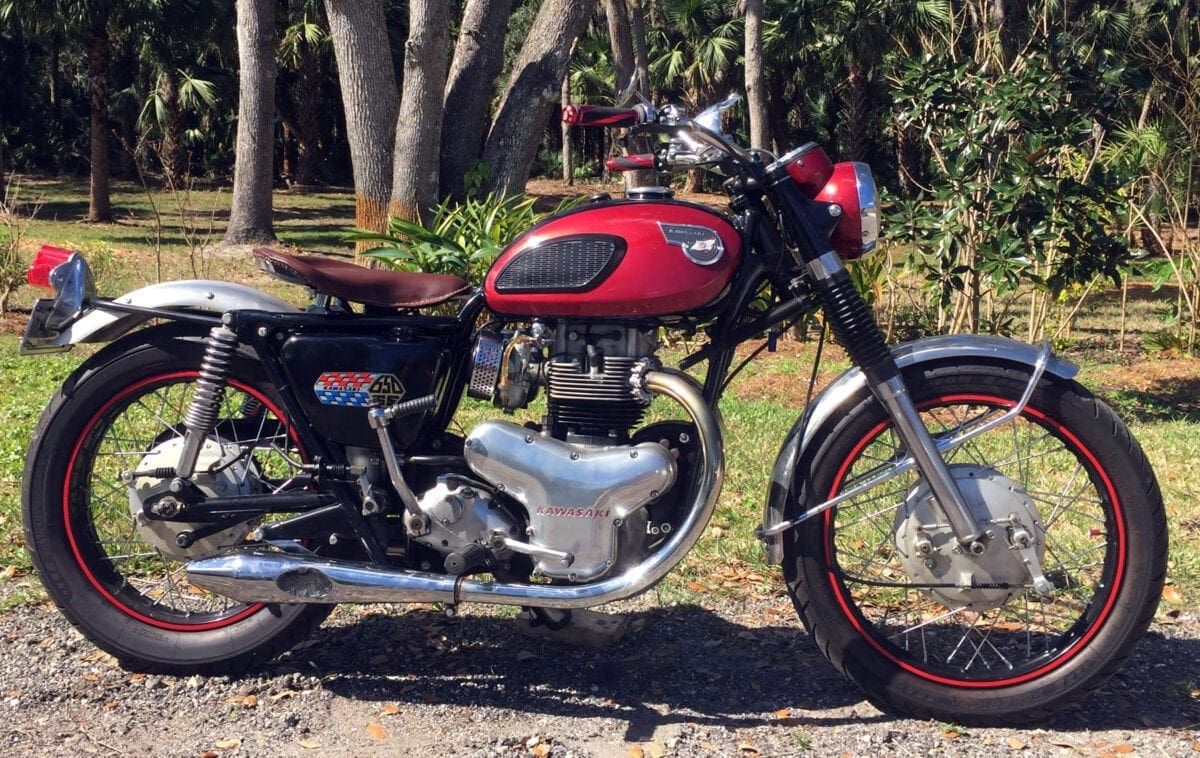
All versions were civilised enough around town, with the mechanically quiet, short-stroke engine providing accessible low-rev performance. It was happy to pull cleanly from 40mph in fifth gear or could race through the ratios from a standstill to 60mph in little more than five seconds. Vibration could be a real bug-bear at higher engine speeds, however, and achieving the 650’s theoretical 110mph top speed could be pretty uncomfortable. And loud: although the motor was almost inaudible, the exhaust note certainly made an impression…
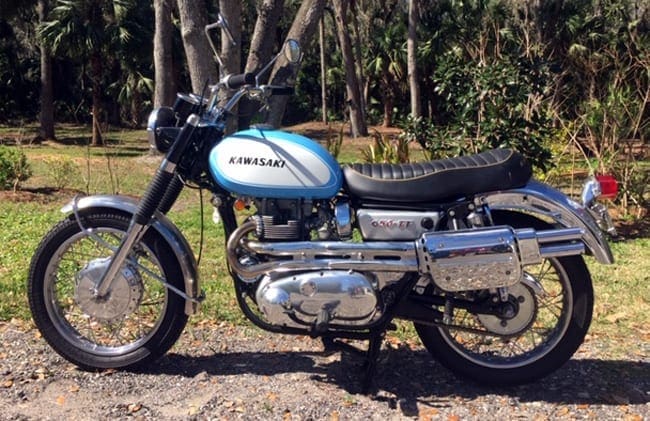
On the plus side, the W1 and W2 steered surprisingly solidly and responded predictably to rider input through the big wide bars – no nasty twitches or scary tankslappers. At 450lb fuelled the W2SS was no lightweight but it carried its mass reasonably low without feeling particularly top heavy.
The 650s were stable on straights and quite comfortable over ripples, although the sls drum brakes were outclassed by the 2ls stoppers being fitted by Kawasaki’s worldwide competitors. Gear engagement improved with the W2 although the wet, multi-plate clutch could be uncomfortably heavy.
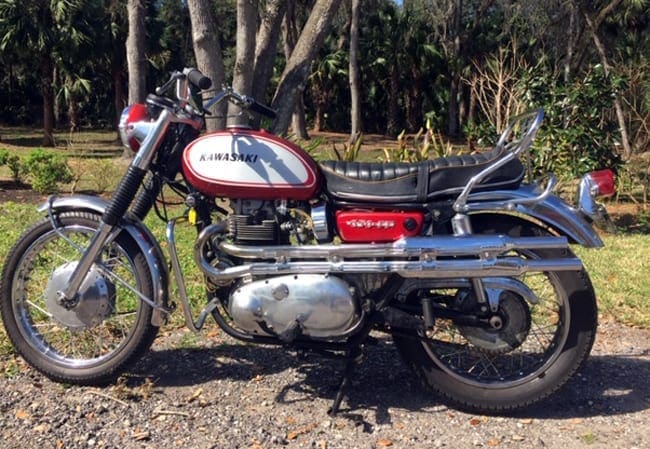
The Kawasaki lagged behind the British twins of its time which were at the peak of their development cycles. Hence few riders in Britain ever saw a W2 although it was a considerable success in its home market, and many were exported to the USA before production ceased in the early 1970s.
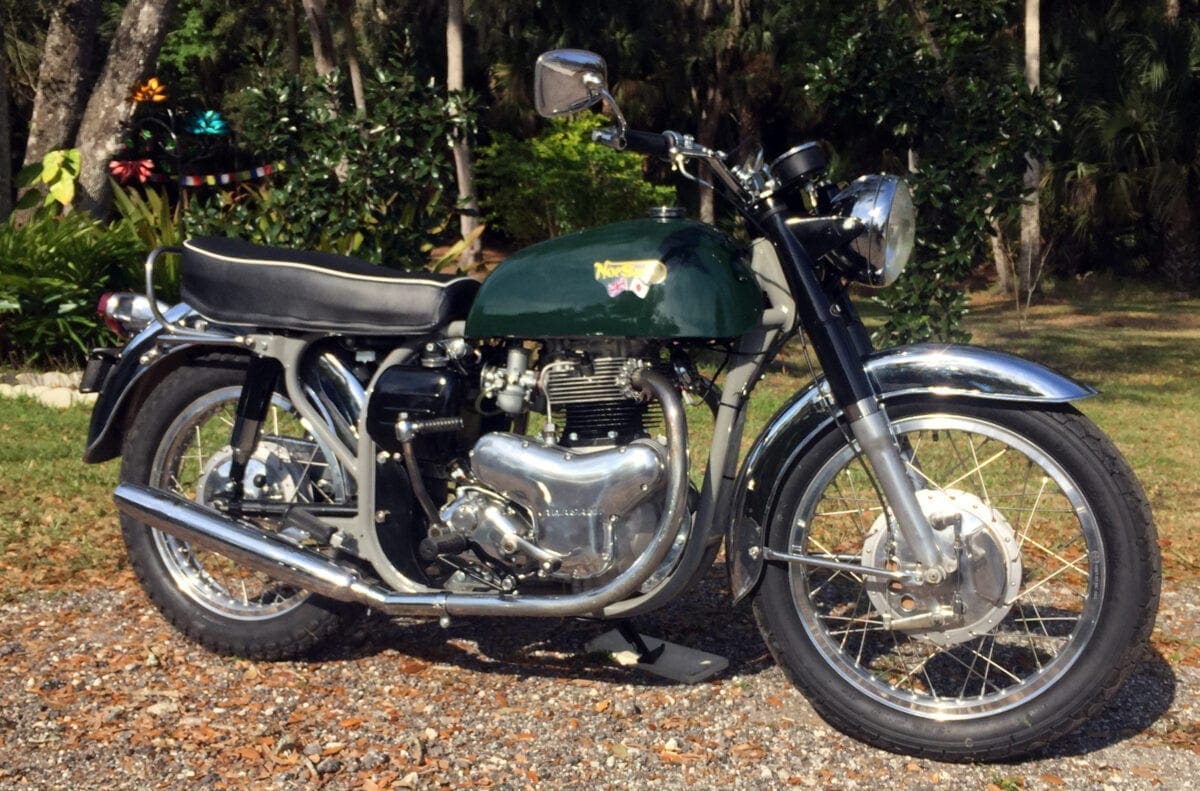
Kevin bought his first one, a 1969 W2SS when it was a year old and he was in high school. It’s been joined by five other W2s and even a NorSaki, a W2 motor in a Norton featherbed frame. Kevin still rides his original W2 to this day.
‘We have been together 50 years!’ he says. ‘Many people have no idea this bike exists and I always have interesting conversations when I take them to shows.’




